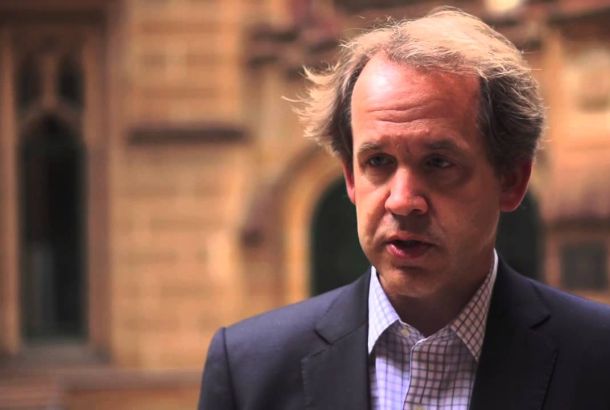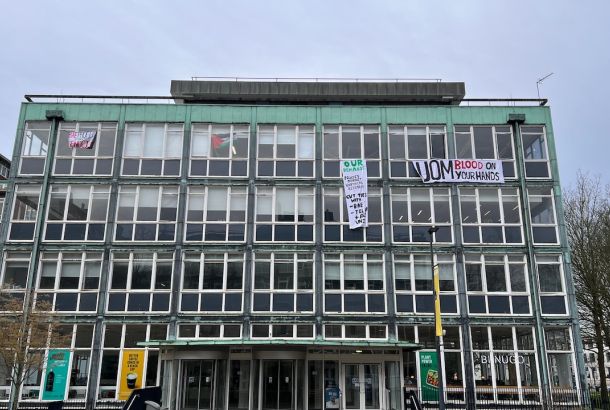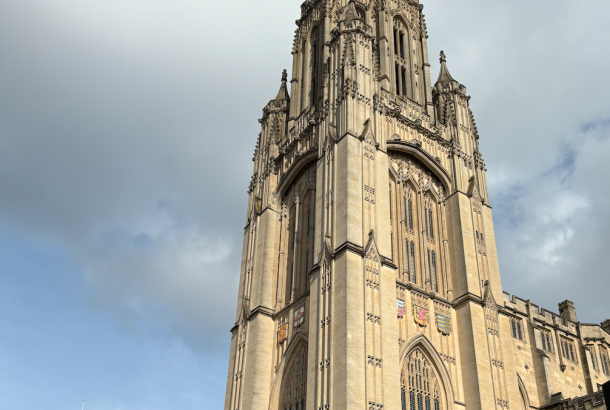University of Manchester-owned radio telescope given Grade I listed status
This year marks the 60th anniversary of Lovell Telescope’s ‘first light’ — the point at which the famous radio telescope was first used to collect radio signals from the far reaches of the universe — at the Jodrell Bank Observatory in Cheshire.
To mark the anniversary, six structures at the Jodrell Bank Centre for Astrophysics at the University of Manchester have been granted protected status from Historic England.
Radio telescopes are used to observe distant objects in the galaxy and the universe too far away to be observed with visible light, in a phenomenon known as the Doppler effect. As stellar objects accelerate further away from earth, their visible light and radiation become stretched so that the wavelength of this radiation is no longer visible, but is detectable in the microwave and radio band.
You have probably experienced this yourself — the Doppler effect applies to sound waves as well. When an ambulance with its sirens on speeds away from you, the sound of the siren appears to sound progressively lower in pitch. This is because the sound waves are being stretched relative to you, and therefore have a lower frequency.
The site was purchased by the university in 1939 and has been used for radio astronomy since 1945. The most famous structure, the Lovell Telescope, named after Sir Bernard Lovell — a physicist working at the University of Manchester — was completed in 1957 and at the time was the world’s largest steerable dish radio telescope.
The Lovell Telescope was given the honour of Grade I listed status in 1988. Structures joining this status for its diamond jubilee include the Mark II radio telescope, which was completed in 1964. Paired with the Lovell Telescope, this second telescope was designed to work in tandem to acquire more accurate data when monitoring distant stellar objects. The design of the Mark II has since become the cornerstone of radio telescope design throughout the world. The Mark II was the first in the world to utilise a computer to control its orientation — the Ferranti Augus 104. This computer had historically been used for military purposes for ballistic missile control, but with the 1960s came an increase in computers being used for more civil and commercial purposes — the Mark II telescope was certainly keeping ahead of the game.
As well as pioneering work in the study the moon, solar system, galaxy and the universe beyond, perhaps Jodrell Bank’s biggest claim to fame was in October 1957, when the Lovell Telescope was the first major telescope in the west to monitor the orbit of Sputnik I, the world’s first man-made satellite to be launched from earth by the Soviet Union.
Other buildings at the site to gain listed status this year are the Royal Park building—the control room for the Transit Telescope whose study of radio waves from the Andromeda galaxy confirmed that the universe extends beyond our own galaxy; the electrical workshop — the main purpose-built teaching building at the site; the Link Hut — used to investigate “cosmic noise”; the control building, and finally, the remains of the 71MHz Searchlight Ariel.
It is perhaps overdue that this centre of historical importance in the field of astrophysics gets the celebration and attention it deserves, but choosing the 60th anniversary of the first light of such an iconic telescope is indeed welcome, and hopefully will inspire the next generation of scientists to explore the deepest and farthest mysteries of the universe.
The Jodrell Bank Discovery Centre is open to the public and free to enter. One can learn more about the universe and tour the grounds, as well as get a breath-taking up-close view of the famous Lovell Telescope.







